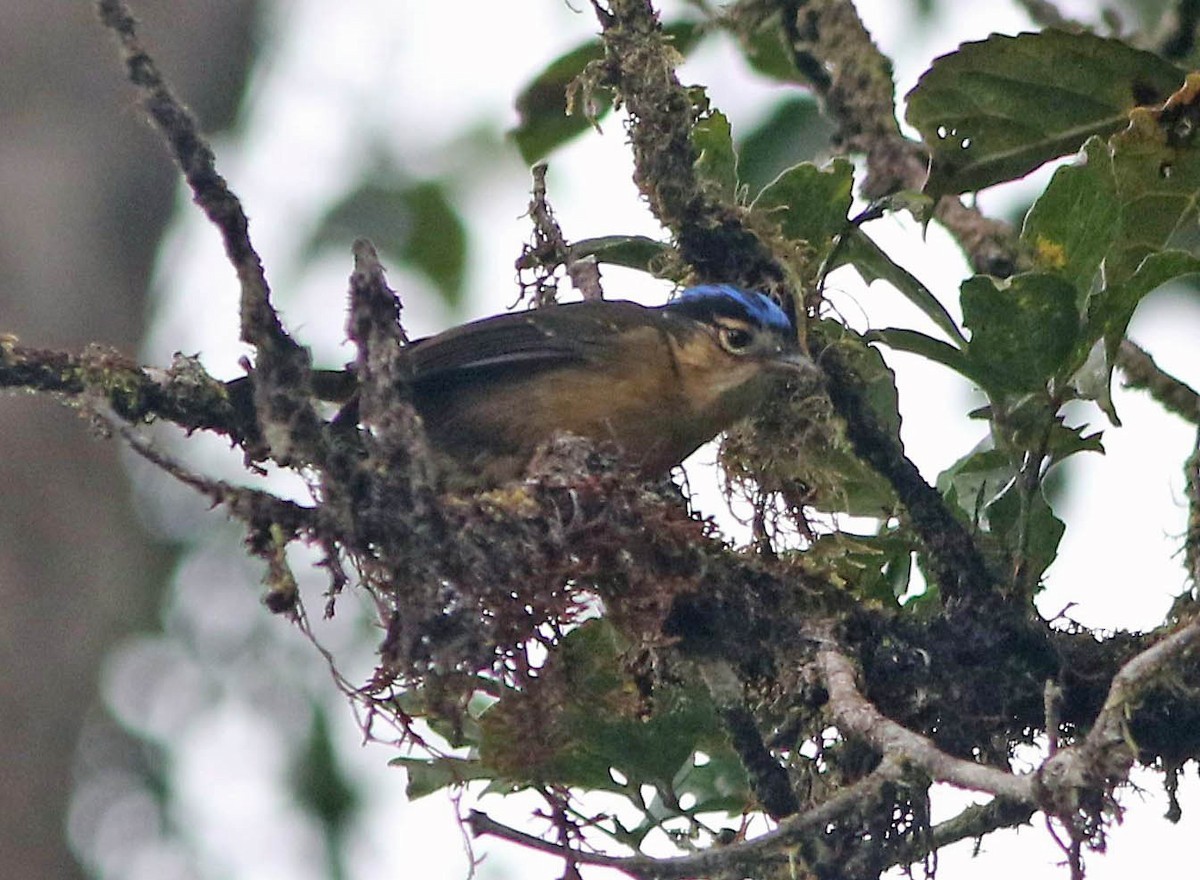Blue-capped Ifrit
A species of Blue-capped Ifrit, Also known as Ifrit Scientific name : Ifrita kowaldi Genus : Blue-capped Ifrit
Blue-capped Ifrit, A species of Blue-capped Ifrit
Also known as:
Ifrit
Botanical name: Ifrita kowaldi
Genus: Blue-capped Ifrit
Content
Description General Info
 Photo By Don Roberson
Photo By Don Roberson Description
The blue-capped ifrit is 16–17 cm (6.3–6.7 in) long and weighs 34-36 g (1.2–1.3 oz). Species plumage is yellowish brown with a blue-black crown atop their broad head. It is a sexually dimorphic species, with ear streak coloration being white in males and more tawny yellow in females. Ifrits tend to have more stout body shapes with broad sternums and shallow keels. Their wings are short and rounded while their legs are booted, having feathers down to their stout and clawed feet. Additionally, blue-capped ifrits have batrachotoxin within their feathers and skin. 
Size
17 cm
Nest Placement
Tree
Feeding Habits
Blue-capped Ifrit primarily consumes insects, especially beetles, and occasionally soft fruit. It forages from ground to treetops and creeps like a nuthatch, probing into moss and branches. Blue-capped Ifrit uses its tail for support and sometimes joins mixed-species flocks for feeding.
Habitat
The blue-capped Ifrit predominantly inhabits montane forests that feature an abundance of moss. These forests are characterized by dense tree coverage and a damp, cool climate, fostering a rich layer of moss and other epiphytes. The species prefers areas with a significant accumulation of decaying plant material, which supports a diverse invertebrate fauna. Found within broader regions that support such montane ecosystems, the blue-capped Ifrit thrives in environments that offer ample foraging opportunities within the forestry undergrowth.
Dite type
Insectivorous
General Info
Feeding Habits
Bird food type
Behavior
As birds with weak flight abilities, blue-capped ifrits build nests about 1–3 meters (3–10 feet) above the ground in the branches of denser rainforest vegetation. These nests are made of plant fibers with some feathers. The parents tend to camouflage the outside of the nest with moss and liverworts. Ifrits lay small clutches with a typical nest containing only a single offspring. The nest camouflage, toxin excretion, and small clutch sizes may have derived from historically high rates of depredation and nest parasitism. 
Distribution Area
Blue-capped ifrits are endemic to New Guinea and Papua New Guinea, being found nowhere else on earth and having a distribution of 388,000 km. Ifrits inhabit montane rainforest of New Guinea, living in altitude ranges of 1,000–4,000 meters (3,280–13,123 feet) above sea level. Typically, they are found at altitudes of 1,500 meters (4,921 feet) or above. 

 Photo By Don Roberson
Photo By Don Roberson Scientific Classification
Phylum
Chordates Class
Birds Order
Perching birds Family
Monarchs Genus
Blue-capped Ifrit Species
Blue-capped Ifrit